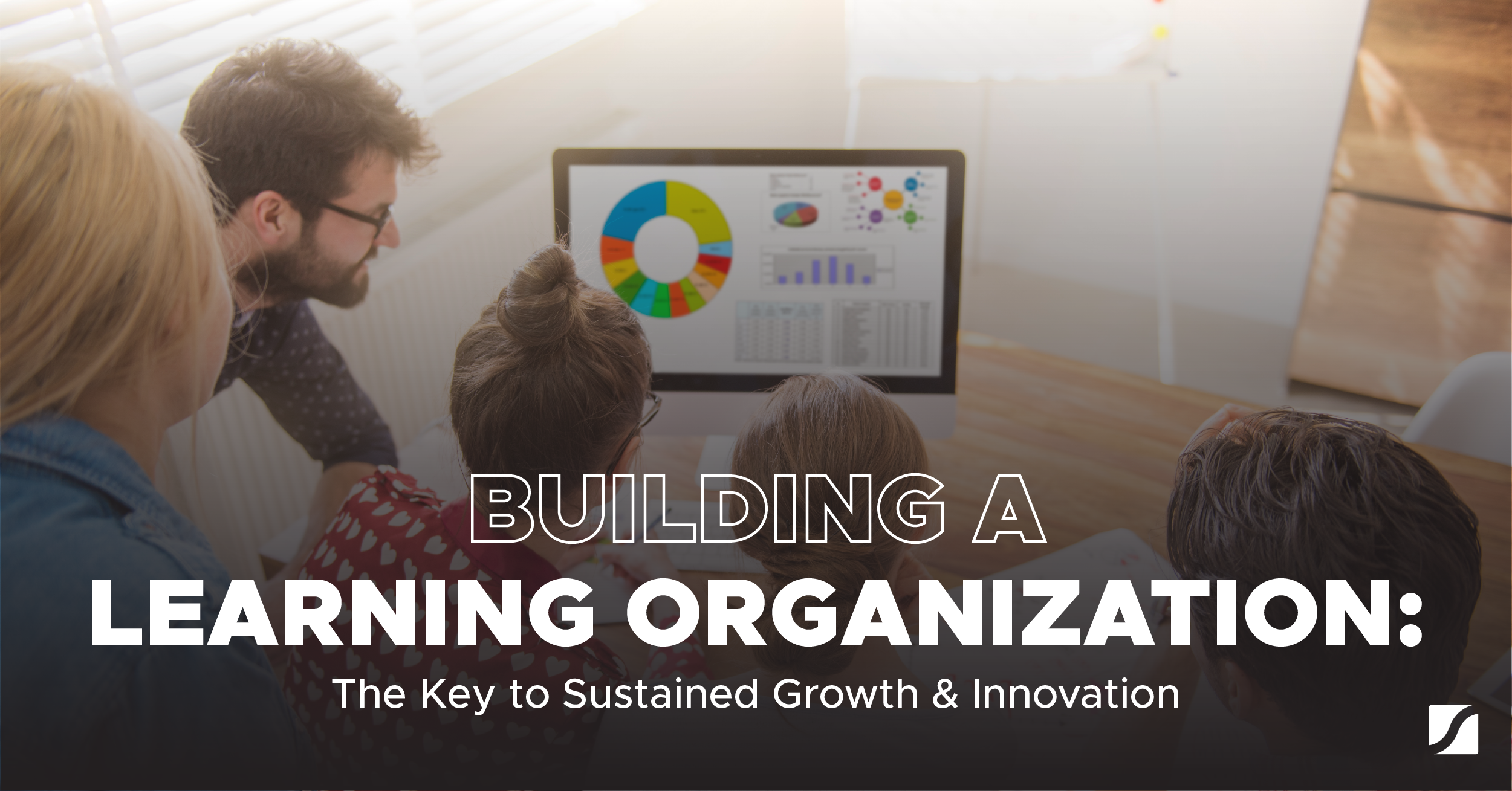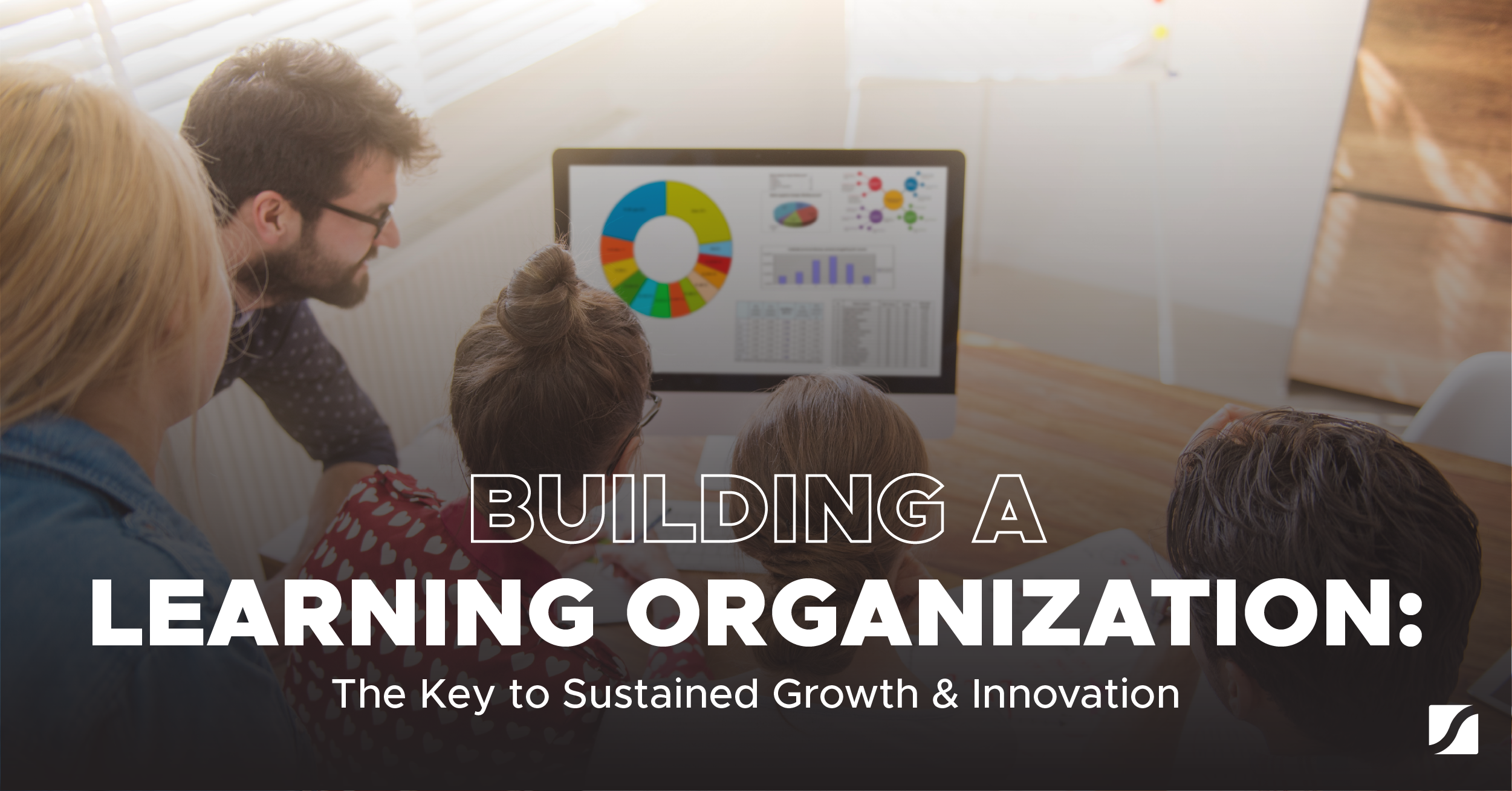Building a Learning Organization: The Key to Sustained Growth & Innovation


Employees are the lifeblood of any organization. They spark innovation, foster relationships with customers, and are the driving force behind a company's growth and success. It's therefore vital for businesses to invest in their development. Let's delve into why and how companies should build learning cultures to maximize impact.
Build a learning culture to nurture your company's best assets: Your employees
The one thing that can either catapult a business or send it burning to the ground is the people. People are the most valuable asset a company possesses. You can be the most brilliant, hardest-working CEO in history, but without the right people around you, it won't mean a thing.
So hire good people, and everything else will fall into place?
Not so fast. While that's certainly a good start, to get the most out of your company, it's on you as the leader to develop your team once they join. That means consistent training and learning and making sure employees have all the resources to perform like true A-players.
.png?width=451&height=254&name=MBD%20webinar%20slides%20April%202023%20(11).png)
That’s what we’ll show you how to do in this article.
To get the ball rolling and start training your team, begin here:
Identify your current growth stage to focus on the right strategy
Understanding your company's current growth stage is the first step in fostering a learning culture.
Before randomly training and coaching your employees, it's essential to understand where in the growth cycle you're currently at. You don't feed a baby a porterhouse steak. So why would you implement systems only required for a 100+ person company with your 5 person start up? Your current growth stage decides the type of training you employ. From there, you can determine the right learning path, systems, and methodologies to bring into your organization.
At Growth Institute, we use the term "The Valleys of Death" to refer to the idea that companies at different stages face different problems.
It's no secret the challenges of a company with 5 to 10 employees look much different than that of 50-plus employees. In fact, in Scaling Up, Verne Harnish states that expanding from three to four people may grow the team by only 33%, yet complexity may increase by 400%.
To escape the valleys of death, you can't expect your employees to figure it out on their own. The leader must help them level up so the organization can do the same.
.png?width=960&height=540&name=MBD%20webinar%20slides%20April%202023%20(4).png)
Building a learning culture through a company university
The benefits of creating a company university
The concept of a 'Company University' has been gaining traction in recent years. This approach to learning involves creating a dedicated space where employees can learn and grow professionally and personally. A Company University can offer a variety of learning opportunities, from workshops and seminars to online courses and mentoring programs.
Commercial pilots are required to hone their skills 60 hours per year in continuing education, doctors need to put in 45 to 60 hours, and truck drivers must complete more than a 12 hours annually. Yet most business professionals aren't required to obtain one single hour. This must change!
Companies who deploy company universities report:
- Increased competitiveness and excitement regarding the future
- More Loyalty due to employees feeling a sense of commitment and belonging
- Higher retention: By connecting your employee's personal growth to the company roadmap, it makes it more likely they stick around for the long haul.
- Massive spikes in engagement and a newfound growth mindset within the team
- Greater Freedom: By building strong leadership throughout the organization, delegation occurs and time gets freed up for people to focus on not only what they're good at, but what gives them energy.
Bottom line, providing training and development to your team members allows you to make decisions faster and scale the company quicker.
Plus you will be buliding a strong employer brand by doing so. This allows you to remain competitive, build loyalty, and improve retention. Members in the organization learn to delegate, which creates more engagement on the team.
.png?width=960&height=540&name=MBD%20webinar%20slides%20April%202023%20(5).png)
Apple University: "An example where employees are not born but made"
A perfect example of the effectiveness of a company university is Apple. Worried that his employees weren't going to be set up for success, Steve Jobs' last project before he died was Apple University. The idea was to provide employees with everything they needed to become great. Steve Jobs wanted Apple employees to build new skills, develop their weak areas, and ultimately have the ability to make critical decisions within the company.
The focus on learning at Apple created a culture that retained top talent and became one of the most successful brands of all time.
Steve Jobs knew Apple University was the one thing he had to do before dying to keep the innovation mindset alive within the company.
With Apple University's success, many companies caught on and did the same.
.png?width=960&height=540&name=MBD%20webinar%20slides%20April%202023%20(6).png)
How to build a learning culture?
Applying learning and development effectively
Creating a learning culture is one thing; applying it is a different animal. Here are some key elements to consider when implementing a learning and development program:
The Key Elements to Building a learning organization:
- Create a Learning and Development Strategy
- Enable a culture (and create time) for continuous learning and development
- Every team member gets trained, no need to apply to get accepted
- Build a peer buddy system
- Identify someone to drive the learning initiative. Look for areas with the most opportunity and focus on foundational topics (such as core purpose/values). These are all critical steps for setting up a successful learning initiative.
Managers should be optimistic their team members are trained, developed, and have everything they need to be ultra-productive. Employees can be encouraged to take ownership of their development with strategic learning initiatives that are tailored to specific goals.
Here’s a simple process for how you can put together a learning plan:
- Utilize 2-3% of the labor cost into learning and development strategies.
- Craft a 3-5-year plan with job scorecards for each position, then assess the current team with respect to the positions needed in the future.
- Utilize one-on-one conversations to determine learning gaps and create personal plans.
- Recognize achievements, provide feedback, and create an environment where innovation is embraced.
.png?width=732&height=412&name=MBD%20webinar%20slides%20April%202023%20(7).png)
Empower your employees with learning, experiences, and coaching
The importance of learning, experiences, and the right coaching to be able to fulfill objectives are essential for a successful implementation of a learning plan and culture.
To properly scale decision-making within a company, you will need the following:
- Training with expectations and learning objectives
- Key performance indicators (KPIs)
- A learning plan
Simon Sinek stressed the importance of consistency in learning rather than intensity for effective results. Indeed, scaling companies are required to blend knowledge from various sources and adapt it to midmarket companies.
In addition, Jim Collins notes that the purpose of a company may change with each new CEO. So it’s crucial that the CEO's personal plan must be aligned with the company's business plan for congruency and success.
.png?width=960&height=540&name=MBD%20webinar%20slides%20April%202023%20(8).png)
How does Growth Institute take all the guesswork out of building a learning organization?
Until recently, company universities were only for huge corporations. We wanted to change that. We wanted to make it accessible to the mid-markets.
In the last ten years, we’ve helped CEOs and executives in 70 countries worldwide become fully operating learning organizations that experience rapid growth. We offer a range of programs to help people increase their skills in areas such as vision and execution, customer success, culture building, scaling up tools, coaching for success, and more.
All of our courses are taught by the top thought leaders in their respective fields. They are the best of the best in the business world at what they do. A powerful networking component and peer support are also available with our always-growing community of top leaders. Plus, a customized curriculum based on each individual's needs is offered with faculty guidance from universities and other organizations.
.png?width=456&height=257&name=MBD%20webinar%20slides%20April%202023%20(10).png)
In conclusion, all employees should participate in learning and development and follow the rigorous structure of their everyday work.
To get fast-growing companies, leaders need to prioritize learning every day by setting aside time for it and mentally engaging team members on what they should be learning.
If you're interested in talking to a business strategist at Growth Institute about setting up a company university, click here to schedule a call or subscribe to our free trial to explore our learning solutions.




